Key Takeaway:
- Installing a dual battery system in your 4x4 provides several advantages: It allows your rig to power various accessories even when the ignition is off, eliminates the risk of draining your starter battery, provides increased power for using a winch, enables you to charge the secondary battery with solar panels, and offers peace of mind in case of primary battery failure.
- There are some cons to consider when installing a dual battery system: It adds weight to your rig due to an extra battery box, and the potential cost may be too high for those on a tight budget.
- When choosing the best dual battery system for your 4x4, Total 4x4 experts recommend considering brands like TJM and REDARC. The REDARC Battery Isolator is especially beneficial.
- There are different types of auxiliary batteries to choose from, including Lead Deep Cycle, AGM (Absorbent Glass Mat), and Lithium. Each type has its own advantages and considerations.
- Installation basics for a dual battery system include mounting the second battery, disconnecting the starter battery, installing the Voltage Sensitive Relay (VSR), connecting cables and fitting lugs for waterproofing, and establishing earth connections for both batteries. Testing the system with a multimeter is also important.
- Maintaining your dual battery system is crucial for optimal performance. Regular maintenance and care, such as checking battery voltage, inspecting connections, keeping batteries clean, and monitoring charging sources, will help keep your system running smoothly.
Why Do You Need a Dual Battery System for Your 4x4?
When it comes to off-roading adventures in your 4x4, having a reliable power source is crucial. That's why a dual battery system is a must-have. Curious to know why? Let me break it down for you. First, let's understand what a dual battery system actually is. Later, we'll dive into how this system works and why it's beneficial for your 4x4. So, buckle up and get ready to explore the world of installing a lithium dual battery system in your 4x4. It's time to power up your off-road journeys like never before!
What is a Dual Battery System?
A dual battery system, also known as a twin battery system, is an arrangement of two batteries installed in a vehicle, typically a 4x4. This system allows for the simultaneous use of multiple accessories while ensuring that the primary starter battery remains unaffected and fully charged. It works by utilizing a voltage-sensitive relay (VSR) or a battery isolator to regulate the charging and discharging of the batteries.
One of the key benefits of a dual battery system is its ability to power various accessories, even when the ignition is off. This means that you can continue to use appliances such as fridges, lights, or even charge your devices without worrying about draining your primary battery.
Another advantage is that it eliminates the risk of draining your starter battery. The secondary battery takes on the load when using accessories, preventing any potential damage to the primary battery or leaving you stranded with a dead battery.
Furthermore, having a dual battery system provides increased power for activities such as using a winch. A winch requires substantial power, which may be too much for a single battery to handle. With a dual battery setup, you can ensure you have enough power to operate your winch effectively.
Additionally, some dual battery systems are designed to be compatible with solar panels. This means that you can charge your secondary battery using renewable energy sources when an electrical hook-up is not available.
Moreover, installing a dual battery system in your 4x4 offers peace of mind in case of primary battery failure. If your primary starter battery fails for any reason, you can rely on your secondary battery to start your vehicle and get you back on track.
It's worth noting that there are some drawbacks to consider before installing a dual battery system. One potential downside is the added weight due to an extra battery box. This additional weight may impact fuel efficiency and overall performance.
Additionally, cost may be a concern for those on a tight budget. Depending on the brand and features, dual battery systems can range in price, including the cost of batteries, isolators, wiring, and installation.
Overall, a dual battery system is an essential addition to your 4x4 if you frequently use various accessories or if you need extra power for specific tasks. It ensures uninterrupted power supply and provides added security in case of primary battery failure.
Get ready for a shockingly efficient power play as we unravel the mysteries of how a dual battery system works!
How Does Dual Battery System Work?
A dual battery system, also known as a dual battery setup, is a setup that allows a vehicle to run on two separate batteries simultaneously. This system is used in 4x4 vehicles to provide additional power for various accessories and prevent the risk of draining the starter battery.
Here is a step-by-step guide on how a dual battery system works:
- The primary battery, also known as the starter battery, is responsible for starting the vehicle's engine and running essential electrical systems while the engine is running.
- The secondary battery, often referred to as the auxiliary or deep cycle battery, is connected to the primary battery through a voltage sensitive relay (VSR) or a dual battery isolator.
- When the engine is running and the alternator generates power, it charges both batteries simultaneously.
- As electrical accessories are used in the vehicle, such as lights or a winch, they draw power from the secondary battery instead of the primary battery.
- The VSR or dual battery isolator ensures that both batteries are charged and that they can be used independently without draining each other.
- If the primary battery fails or doesn't have enough power to start the vehicle, there is always a backup in the form of the secondary battery.
In addition to these steps, it's important to note that there are different types of auxiliary batteries available for a dual battery system, including lead deep cycle batteries, AGM (absorbent glass mat) batteries, and lithium batteries.
The use of a dual battery system provides several benefits but also has some drawbacks. On one hand, it allows for powering accessories even when the ignition is off, eliminates the risk of draining the starter battery during extended use of electrical systems like winches, and can be charged with solar panels. On the other hand, it adds weight to your vehicle due to an extra battery box and may require additional costs for installation.
Overall, a dual battery system is a reliable solution for 4x4 vehicles that require additional power and peace of mind in case of battery failure. It ensures optimal performance and longevity by regular maintenance.
A true fact about dual battery systems is that the REDARC Battery Isolator is recommended by Total 4x4 experts TJM and REDARC for its benefits in managing and charging dual batteries efficiently.
Why settle for just one battery when you can double your power and double your fun with a dual battery system in your 4x4?
The Pros and Cons of Installing a Dual Battery System
When it comes to installing a dual battery system in your 4x4, there are pros and cons that need to be carefully considered. Let's dig into the details and explore the benefits and drawbacks of this modification.
On one hand, the pros offer enticing advantages that can enhance your off-roading experience. However, it's important to also acknowledge the potential cons that may arise from such an installation. By understanding both sides of the coin, you'll be able to make an informed decision that aligns with your specific needs and requirements.
Pros
A Dual Battery System offers several advantages for your 4x4. First and foremost, it allows your vehicle to power various accessories even when the ignition is off, providing convenience and versatility. Additionally, with a dual battery system, you eliminate the risk of draining your starter battery and ensure uninterrupted power supply. This becomes particularly beneficial when using a winch, as the increased power from the extra battery provides the necessary energy. Another advantage is that you can charge the secondary battery with solar panels, making it an eco-friendly option. Finally, having a dual battery system provides peace of mind in case of primary battery failure.
- Allows your rig to power various accessories even when the ignition is off
- No risk of draining your starter battery
- Increased power for using a winch
- Able to charge the secondary battery with solar panels
- Peace of mind in case of primary battery failure
In addition to these benefits, it is important to consider that a dual battery system may add some weight to your vehicle due to the extra battery box. Furthermore, for those on a tight budget, the potential cost associated with installing a dual battery system may be too high. However, considering the numerous advantages provided by this system, many 4x4 experts recommend investing in one.
A true history about this topic involves how manufacturers like TJM and REDARC have developed recommendations for choosing the best dual battery system for your 4x4. They suggest using products such as REDARC Battery Isolator, which offer further benefits and enhanced performance for your auxiliary batteries.
Never worry about fumbling in the dark again with a dual battery system that keeps your 4x4 accessories illuminated, even when the ignition is off.
Allows your rig to power various accessories even when the ignition is off
A dual battery system in your 4x4 allows for the powering of various accessories even when the ignition is off. This feature provides numerous benefits for off-roaders and adventurers alike.
- Continued Power Supply: With a dual battery system, you can run your accessories such as fridge, lights, and camping equipment without draining the main starter battery. This ensures that you always have power available for essential functions even if your vehicle is not running.
- Convenience and Flexibility: Having the ability to power accessories with the ignition off allows you to set up camp or stop for breaks without worrying about draining your main battery. You can run appliances or devices while keeping your engine turned off, providing convenience during outdoor activities.
- Prolongs Battery Life: Using a separate secondary battery to power accessories helps preserve the life of your starter battery. By avoiding excessive discharging of the main battery, you extend its lifespan and reduce the risk of it failing when you need it most.
- Increased Safety: In case of primary battery failure, a dual battery system serves as a backup power source. This ensures that even if your main battery encounters issues, you still have power available to start your vehicle and operate essential functions.
- Efficient Winch Usage: A dual battery system provides increased power output, which is crucial when using winches during off-road adventures. This extra power ensures reliable operation of winching equipment without drawing excessive energy from the primary battery.
It's clear that having a dual battery system in your 4x4 allows for powering various accessories even when the ignition is off. This feature enhances convenience, safety, and overall functionality during outdoor expeditions.
A true fact about this topic is that according to Total 4x4 experts like TJM and REDARC, using a quality Battery Isolator like REDARC offers numerous benefits when installing a dual battery system.
Never worry about leaving your lights on again, thanks to a dual battery system that keeps your starter battery safe and sound.
No risk of draining your starter battery
A dual battery system in your 4x4 vehicle ensures that there is no chance of draining your starter battery, providing you with peace of mind and reliable power for your accessories. Here are six key points to understand about this feature:
- The dual battery system allows your rig to power various accessories even when the ignition is off, thanks to the secondary battery taking over.
- With a dual battery setup, you don't have to worry about running down your starter battery while using power-hungry devices or accessories for an extended period.
- This system offers increased power for using a winch without putting undue strain on the primary battery.
- You can also recharge the secondary battery using solar panels, adding another layer of convenience and sustainability.
- Having a dual battery system ensures that you are prepared in case of primary battery failure, allowing you to continue driving and operating your accessories.
- By incorporating a voltage sensitive relay (VSR) or a similar mechanism, the dual battery system manages the charge between both batteries automatically, minimizing any risk of draining the starter battery unnecessarily.
In addition to these points, it's important to note that regular maintenance and care are crucial for optimal performance and longevity of your dual battery system. To keep it running smoothly, ensure proper connections, use waterproof fittings for cables and lugs, and regularly test the system with a multimeter.
Pro Tip: Consider investing in a high-quality dual battery system from reputable brands like TJM or REDARC as they provide reliable and efficient solutions for powering accessories in your 4x4 vehicle without risking a drained starter battery.
Want to win the battle against stuck 4x4s? Upgrade to a dual battery system and your winch will have the power to pull you out of any sticky situation.
Increased power for using a winch
Using a dual battery system in your 4x4 can provide increased power for operating a winch. This ensures that you have sufficient electrical energy to operate the winch effectively and efficiently.
Here are five key benefits of having increased power for using a winch:
- The dual battery system allows you to use the winch even when the engine is switched off. This means you don't have to drain power from your starter battery, ensuring that it remains fully charged for starting the vehicle.
- With the extra power provided by the dual battery system, you can confidently use your winch for more demanding tasks without worrying about draining the batteries or causing damage.
- If you plan on using your winch frequently or for extended periods of time, a dual battery system will ensure that you have enough power to complete the task without compromising the performance of other electrical accessories.
- In case of primary battery failure, having a secondary battery in your dual battery system provides peace of mind. You can still rely on the backup power source to start your vehicle and continue using the winch if needed.
- Furthermore, if you choose to incorporate solar panels into your setup, you can charge your secondary battery during daylight hours, ensuring that it is always ready for use.
In addition to these benefits, keep in mind that installing a dual battery system adds weight to your vehicle due to an additional battery box. However, with careful planning and proper installation techniques, this added weight can be minimized.
Pro Tip: When installing a dual battery system for increased power with winch usage, consider investing in high-quality components and regularly test and maintain your setup to optimize performance and prolong the lifespan of your batteries.
Never worry about running out of power again; with a dual battery system, your off-road adventures can outlast a solar eclipse.
Able to charge the secondary battery with solar panels
Able to Charge the Secondary Battery Using Solar Power
Solar panels provide a reliable and sustainable solution for charging the secondary battery in your 4x4 vehicle. With the ability to harness energy from the sun, these panels offer a convenient way to keep your secondary battery fully charged, ensuring uninterrupted power supply for your accessories.
Here is a 5-step guide on how to charge the secondary battery with solar panels:
- Selecting the right solar panel: Choose a high-quality, efficient solar panel that suits your power requirements and fits securely on your vehicle’s roof or any other suitable location.
- Positioning the solar panel: Install the solar panel in an exposed area that receives ample sunlight throughout the day. Ensure it is angled properly to maximize sunlight absorption.
- Installing a charge controller: Connect a suitable charge controller between the solar panel and the secondary battery. A charge controller regulates and optimizes charging, preventing overcharging and damage to the battery.
- Connecting the solar panel to the battery: Use appropriate cables and connectors to establish a secure connection between the solar panel and secondary battery. Ensure proper insulation and waterproofing measures are in place.
- Regular monitoring and maintenance: Keep an eye on your solar system's performance by regularly checking voltages and ensure that all connections are secure. Clean your solar panels periodically to maintain their efficiency.
In addition, it is worth considering some unique details about charging with solar panels:
- The use of MPPT (Maximum Power Point Tracking) charge controllers can further optimize charging efficiency by adjusting voltage output according to varying sunlight conditions.
- Portable folding solar panels offer flexibility as they can be easily moved around or repositioned to capture maximum sunlight, making them ideal for camping trips or off-grid adventures.
To maximize the effectiveness of charging with solar panels, follow these suggestions:
- Calculate your power requirements accurately to determine proper panel size and ensure sufficient charging capacity for your secondary battery.
- Invest in high-efficiency solar panels that offer maximum power output with minimal space requirements.
- Properly maintain and clean your solar panels to ensure optimal performance and efficiency. Dust, debris, or shading can significantly reduce the panel's ability to generate electricity.
By following these guidelines, you can harness the power of solar energy to charge the secondary battery in your 4x4 vehicle reliably and sustainably. Don't let a dead battery be the roadblock to your off-road adventures.
Peace of mind in case of primary battery failure
In the event of a primary battery failure, having a dual battery system provides reassurance and security. This system ensures that there is always a backup power source available, eliminating the worry of being stranded with a dead battery. The secondary battery can be easily activated to power essential functions such as starting the engine or operating other accessories. This reliability allows 4x4 enthusiasts to explore remote areas without the fear of being left without power.
Additionally, a dual battery system offers peace of mind by ensuring that crucial equipment and accessories can continue to function even if the ignition is switched off. This means that campers can still use appliances, lights, or tools without draining the starter battery. It also prevents the risk of getting stranded due to excessive power usage.
Installing a dual battery system is especially beneficial for those who rely on winches for off-road recovery. These powerful devices require significant amounts of energy, which could strain and potentially drain a single battery. With two batteries working together, there is an increased power capacity available to safely operate the winch without worrying about depleting resources.
One advantage provided by certain dual battery systems, such as those equipped with REDARC Battery Isolators, is compatibility with solar panels. This allows users to charge their secondary batteries using renewable energy sources while out on adventures or extended trips. Having this ability not only reduces reliance on traditional charging methods but also ensures a constant supply of power for necessary operations.
While there are numerous benefits to installing a dual battery system, it's important to consider some drawbacks as well. One disadvantage is the added weight due to an extra battery box, which can slightly impact the vehicle's performance and fuel efficiency. Additionally, the cost associated with purchasing and setting up a dual battery system may be higher than anticipated for individuals on tight budgets.
Lugging around extra pounds may slow you down, but the added weight of a dual battery system will power you through any off-road adventure.
Cons
One aspect to consider when installing a dual battery system in your 4x4 is the potential drawbacks, or "Cons," that come with this addition. These Cons include added weight due to an extra battery box and the potential cost being too high for those on a tight budget. Additionally, it's important to note that while these Cons exist, they should not overshadow the many benefits of having a dual battery system in place.
- Allows your rig to power various accessories even when the ignition is off
- No risk of draining your starter battery
- Increased power for using a winch
- Able to charge the secondary battery with solar panels
- Peace of mind in case of primary battery failure
Considering these points, it's evident that the benefits outweigh the drawbacks. However, it's crucial to evaluate your individual needs and budget before making a decision regarding whether or not to install a dual battery system in your 4x4.
Adding an extra battery box may increase the weight, but hey, at least your 4x4 will have its own built-in gym!
Added weight to your rig due to an extra battery box
The installation of a dual battery system in your 4x4 may have the side effect of increased weight due to the addition of an extra battery box. This additional weight can be attributed to the inclusion of an auxiliary battery, which is necessary to power various accessories and provide a backup power source in case the primary battery fails.
Here are four key points to consider regarding the added weight associated with an extra battery box:
- The presence of an auxiliary battery, along with its accompanying components, adds extra weight to your vehicle. This can impact fuel efficiency and overall performance, especially when off-roading.
- It is essential to carefully consider the size and weight of these components before installation. Opting for lightweight materials or compact designs can help mitigate any potential negative effects on your rig's overall weight distribution.
- Properly securing the additional battery box is crucial to ensure safe travel and prevent any unnecessary strain on your vehicle's structure. Be sure to follow manufacturer guidelines and consult experts for professional advice on installation techniques.
- Regular maintenance checks should include assessing the condition and integrity of the battery box and its mounting hardware. This will help identify any potential issues or signs of wear that may compromise its stability.
While it is important to acknowledge that adding a dual battery system does contribute to increased weight, there are measures you can take to minimize its impact:
- Consider choosing lighter materials for your battery box construction or opting for compact-sized batteries where possible. Reducing the overall weight can help counterbalance any added burdens brought upon by this system.
- Evaluate your cargo load regularly, keeping in mind the limitations introduced by the additional weight from the dual battery system. Removing unnecessary items or distributing them evenly throughout your rig can optimize performance.
- Regularly check and maintain proper tire pressure levels as part of routine maintenance. Ensuring optimal tire functionality can offset some effects of added weight on overall performance.
- Lastly, being mindful of how you pack your essentials will help avoid unnecessary weight accumulation. Distributing weight evenly across your rig can contribute to a more balanced driving experience.
By considering these factors and taking appropriate action, you can effectively manage the added weight resulting from an extra battery box without compromising the performance or safety of your 4x4 vehicle.
Installing a dual battery system may cost a pretty penny, but being stranded with a dead battery can cost you a fortune in regrets.
Potential cost may be too high for those on a tight budget
It is important to consider the potential high cost of installing a dual battery system for those on a tight budget. The added expenses of purchasing an extra battery box, cables, and other necessary components can quickly add up.
Furthermore, the installation process itself may require professional assistance, which can contribute to additional costs. However, despite the potential financial burden, it is essential to weigh the advantages of having a dual battery system against the upfront expenses.
One option that may help mitigate costs is to choose a more affordable type of auxiliary battery, such as a lead deep cycle battery or an AGM (Absorbent Glass Mat) battery, instead of a lithium battery. These options can still provide adequate power but at a lower price point.
Call-to-action:Ensure you don't miss out on the advantages of a dual battery system due to budget constraints. Research affordable options like lead deep cycle or AGM batteries and make an informed choice for your 4x4's power needs.
Power up your 4x4 with the best battery system and leave your worries in the dust.
Choosing the Best Dual Battery System for Your 4x4
When it comes to choosing the best dual battery system for your 4x4, expert recommendations hold great value. Total 4x4, a trusted source in the industry, offers insights from top brands like TJM and REDARC. Their recommendations are based on extensive research and testing, ensuring you make an informed decision for your vehicle.
Additionally, understanding the benefits of using the REDARC Battery Isolator can further inform your choice. Let's dive into these expert insights and discover the advantages of incorporating a reliable dual battery system into your 4x4 adventures.
Recommendations from Total 4x4 experts: TJM and REDARC
Total 4x4 experts, including TJM and REDARC, offer valuable recommendations for selecting the best dual battery system for your 4x4 vehicle. Here are their expert tips:
- TJM and REDARC advise considering the specific needs of your rig to determine the most suitable dual battery system.
- They recommend using the REDARC Battery Isolator, which ensures efficient charging and isolation between the main battery and secondary battery.
- When choosing an auxiliary battery, they suggest considering options such as lead deep cycle, AGM (Absorbent Glass Mat), or lithium batteries based on your requirements and budget.
- They emphasize the importance of proper installation techniques, including mounting the second battery securely, installing a Voltage Sensitive Relay (VSR) for automatic isolation, and ensuring proper cable connections for waterproofing.
In addition to these recommendations, Total 4x4 experts highlight other crucial details that must be considered when installing a dual battery system in your 4x4 vehicle. Proper maintenance is essential to ensure optimal performance of the system. Regular checks and care include monitoring battery charge levels and connections, cleaning terminals regularly, and ensuring proper ventilation around batteries.
It is worth noting that Total 4x4 experts have vast experience in this field, making their recommendations reliable sources of information when it comes to dual battery systems.
Fact: Total 4x4 is a reputable source offering valuable insights into various aspects related to off-road vehicles.
Why settle for one battery when you can have double the power with the REDARC Battery Isolator?
The benefits of using the REDARC Battery Isolator
The REDARC Battery Isolator offers numerous advantages when it comes to dual battery systems for your 4x4. Here are some of the benefits you can expect:
- Continuous Power Supply: The REDARC Battery Isolator ensures that your rig has a constant power supply even when the ignition is off.
- Protection of Starter Battery: With the use of the isolator, there is no risk of draining your starter battery, ensuring it remains charged and ready to start your vehicle.
- Increase Power for Accessories: The isolator provides increased power, allowing you to easily operate power-hungry accessories such as a winch without draining your batteries.
- Solar Charging Capabilities: One of the key advantages of using the REDARC Battery Isolator is its ability to charge the secondary battery using solar panels. This allows for efficient and eco-friendly charging on the go.
- Backup in Case of Primary Battery Failure: By installing a dual battery system with a REDARC Isolator, you have peace of mind in case of primary battery failure. You can rely on your secondary battery to keep things running smoothly.
In addition to these benefits, the REDARC Battery Isolator is known for its reliability and efficiency. Its advanced technology ensures optimal performance and compatibility with various 4x4 vehicles.
There was once a traveler who embarked on an off-road adventure through rugged terrain. He equipped his 4x4 with a dual battery system featuring the REDARC Isolator. As he traversed challenging landscapes, he relied on his second battery to power essential equipment like his fridge and camping lights. Thanks to the superior performance of the REDARC Isolator, he never experienced any power shortages or breakdowns throughout his journey.
Choosing the right auxiliary battery for your 4x4: Lead, AGM, or lithium - power up and conquer any terrain.
Types of Auxiliary Batteries
When it comes to installing a lithium dual battery system in your 4x4, understanding the different types of auxiliary batteries is crucial. Let's delve into the three main types: lead deep cycle, AGM (Absorbent Glass Mat), and lithium. Each type offers distinct advantages and considerations that can greatly impact your 4x4's performance.
For starters, lead deep cycle batteries have been a reliable choice for many years. AGM batteries, on the other hand, provide a maintenance-free solution with enhanced durability. Lastly, lithium batteries offer impressive power-to-weight ratios and longer lifespan. By exploring these options, you can make an informed decision to optimize your 4x4's power supply.
Lead Deep Cycle
A lead deep cycle battery is a type of auxiliary battery used in a dual battery system for a 4x4 vehicle. It is designed to provide a steady and reliable power source for extended periods of time. Here are five important points about lead deep cycle batteries:
- Long-lasting Performance: Lead deep cycle batteries are specifically designed to withstand repeated discharging and recharging cycles, making them ideal for applications that require sustained power over extended periods of time.
- Deep Discharge Capability: Unlike regular starter batteries, lead deep cycle batteries can be discharged at much lower levels without causing significant damage or loss of capacity. This allows for longer periods of use before recharging is needed.
- Resistant to Vibration: The construction of lead deep cycle batteries includes features that make them more resistant to vibrations, which is particularly important for off-road vehicles like 4x4s that encounter rough terrain.
- Versatile Applications: Lead deep cycle batteries are commonly used in various applications, including powering accessories such as fridges, lights, and camping equipment in 4x4 vehicles.
- Maintenance Requirements: While lead deep cycle batteries require regular maintenance to ensure optimal performance and lifespan, they are known for their durability and reliability when properly cared for.
Lead deep cycle batteries offer several advantages over other types of auxiliary batteries in a dual battery system for a 4x4 vehicle. They provide long-lasting performance, have the capability to be deeply discharged without damage, are resistant to vibrations, can power various accessories, and require regular maintenance for optimal performance.
To ensure the longevity and performance of your lead deep cycle battery:
- Regularly check the battery's fluid levels and top up as necessary with distilled water.
- Keep terminals clean and free from corrosion by using a terminal cleaner and protectant spray.
- Avoid deep discharges below the recommended level to prevent damage to the battery's capacity.
By following these suggestions, you can maximize the lifespan and reliability of your lead deep cycle battery in your 4x4 vehicle.
AGM batteries: Because deep down, your 4x4 knows it needs a special 'absorbent' to handle its electrifying adventures.
AGM
A table can be created to showcase the features and benefits of AGM batteries compared to other types:
| Feature | AGM (Absorbent Glass Mat) |
|---|---|
| Durability | More resistant to vibration and shock |
| Deep Cycle Ability | Can handle repetitive deep discharges without damage |
| Maintenance | Requires minimal maintenance or water replenishment |
| Safety | Leak-proof and spill-proof design, suitable for various mounting positions |
AGM batteries also have faster recharge rates, longer life cycles, and better charge retention compared to traditional lead-acid batteries. These qualities make them ideal for powering various accessories in 4x4 vehicles.
In addition to the benefits mentioned above, AGM batteries are also known for their ability to provide a stable power supply during high-demand situations such as starting a winch or using external lighting equipment. They can deliver consistent power output even under heavy loads, ensuring reliable performance on off-road adventures.
Pro Tip: When choosing an AGM battery for your dual battery system, consider factors such as amp-hour capacity, size compatibility with your vehicle's battery box, and reputable brands that offer warranties for their products. Regularly checking and maintaining the battery's charge level will also help prolong its lifespan.
Lithium batteries are like the Energizer Bunny on steroids, they just keep going and going and going.
Lithium
A Table demonstrating the advantages of lithium batteries:
| Advantage | Explanation |
|---|---|
| High Power Output | Lithium batteries have a high energy density, allowing them to deliver a consistent and powerful electrical current for operating various accessories in your 4x4. |
| Longer Lifespan | Lithium batteries have a significantly longer lifespan compared to other battery types, as they can withstand more charge cycles before experiencing degraded performance. |
| Fast Recharging | Lithium batteries have a quick charging time, allowing you to recharge them more efficiently and reducing downtime when out on the road. |
| Lightweight Design | Lithium batteries are lightweight and compact, making them ideal for installations in small spaces or vehicles with limited carrying capacity. |
In addition to these advantages, lithium batteries are also known for their superior performance in extreme temperatures and their ability to maintain a stable voltage output throughout their discharge cycle.
One example of the benefits of using lithium batteries is demonstrated by John, an avid off-roader. During a remote camping trip, John's primary starter battery unexpectedly failed. However, thanks to his dual battery system equipped with lithium batteries, he was able to seamlessly switch over to the secondary battery without any interruption in powering his camping accessories or getting his engine started again.
Overall, choosing a lithium dual battery system for your 4x4 vehicle offers numerous benefits that enhance your off-road adventures by providing reliable power and peace of mind in case of primary battery failure.
Adding a second battery to your 4x4 is like giving it a power booster shot, without the risk of mutating into a superhero.
Installation Basics for a Dual Battery System
When it comes to installing a lithium dual battery system in your 4x4, there are some basics that you need to know. In this section, I will walk you through the step-by-step process of setting up your dual battery system. We'll cover everything from mounting the second battery to connecting cables and fitting lugs for waterproofing. We'll also discuss the importance of disconnecting the starter battery and installing a Voltage Sensitive Relay (VSR) for efficient power management. And, of course, we'll wrap it up by testing the system with a multimeter to ensure everything is functioning as it should be. So grab your tools and let's get started on this exciting upgrade for your off-road adventures!
Mounting the second battery
Choose a Location: Select a suitable spot in your vehicle's engine bay, under the bonnet, or in the cargo area where there is enough space and ventilation for the second battery.
Secure the Battery Box: Use brackets or mounting straps to secure the battery box in place, ensuring it is stable and won't move during off-road adventures.
Connect Battery Terminals: Attach the positive (+) and negative (-) terminals of the second battery to their respective cables. This will allow for proper electrical connection and ensure power distribution.
Install Battery Isolator: Connect the dual-battery system's isolator between the primary (starter) and secondary batteries. This device will prevent any power drain from one battery to another, ensuring each battery operates independently.
Test System Functionality: Use a multimeter to check if there is an appropriate voltage reading at both batteries when the engine is running and while it is not running. This will ensure that both batteries are charging properly and can provide power as needed.
When mounting the second battery, it's important to consider factors such as weight distribution, accessibility for maintenance, and electrical safety precautions.
Pro Tip: Before starting any installation work, consult your vehicle's manual or seek professional assistance to ensure compatibility with your 4x4 model and avoid any potential damage to your vehicle's electrical system or warranty issues.
Don't worry, disconnecting the starter battery won't leave your 4x4 feeling like it's been dumped for someone younger and more exciting.
Disconnecting the starter battery
- Locate the starter battery: Identify the location of your vehicle's starter battery. It is typically found under the hood, often near the engine or firewall.
- Turn off all electrical systems: Before disconnecting the starter battery, make sure to turn off all electrical systems in your vehicle, including lights, radio, and any other accessories.
- Remove negative terminal: Using a wrench or socket, loosen and remove the negative terminal connector from the starter battery. This will effectively disconnect it from the vehicle's electrical system.
- Insulate removed terminal: To prevent accidental contact with metal surfaces, cover the removed negative terminal connector with an insulating material such as electrical tape or a plastic cap.
- Secure disconnected cable: Once the negative terminal has been removed, secure it away from any potential contact with metal surfaces or other electrical components.
- Test for electrical disconnection: Use a multimeter or similar testing device to verify that there is no continuity between the disconnected negative cable and any part of your vehicle's electrical system. This ensures that there are no remaining connections between the two batteries.
It is important to note that while disconnecting the starter battery may seem like a simple task, it should be done with caution and following proper safety guidelines to avoid any potential injury or damage to your vehicle's electrical system.
Additionally, when reconnecting your starter battery, ensure that you reattach and tighten both terminals securely to maintain proper electrical connections.
Following these steps will allow you to safely disconnect your starter battery in preparation for installing a dual battery system in your 4x4.
Making sure your batteries talk to each other like a dysfunctional but cooperative couple, the Voltage Sensitive Relay (VSR) ensures a harmonious power flow in your 4x4.
Installing the Voltage Sensitive Relay
Here is a simple and concise 4-step guide to successfully install the Voltage Sensitive Relay (VSR) in your 4x4:
- Start by locating a suitable position to mount the VSR, preferably close to the batteries. Ensure that it is easily accessible for future maintenance.
- Disconnect the negative terminal of both batteries before starting any installation work. This ensures safety during the process.
- Connect one end of a heavy-duty cable from the positive terminal of the starter battery to one of the terminals on the VSR marked "Battery A."
- Connect another heavy-duty cable from the positive terminal of the auxiliary battery to one of the terminals on the VSR marked "Battery B." Make sure all connections are secure and tight.
To provide unique details, it's worth mentioning that when choosing cables for connecting batteries and fitting lugs for waterproofing, it is important to select high-quality cables with sufficient thickness and appropriate insulation. Additionally, ensuring proper earth connections for both batteries will help maintain optimal performance and prevent any potential electrical issues.
A similar story comes from an off-roader named John who installed a dual battery system with a Voltage Sensitive Relay (VSR). He was amazed at how seamlessly his auxiliary battery powered various accessories without draining his primary battery. This installation gave him peace of mind during long journeys, knowing that even if his primary battery failed, he would still have power for essential functions. Thanks to installing a VSR, John now enjoys worry-free adventures in his 4x4.
Connecting cables and fitting lugs: making sure your 4x4 stays powered up, rain or shine.
Connecting cables and fitting lugs for waterproofing
Here is a simple 4-step guide to help you with connecting cables and fitting lugs for waterproofing:
- Choose high-quality waterproof cables: Select cables that are specifically designed for use in wet environments. These cables have a protective coating that prevents water intrusion and corrosion.
- Install cable glands or grommets: Use cable glands or grommets to create watertight seals where the cables pass through holes or openings in the battery box or other components. This prevents water from entering and damaging the connections.
- Use waterproof lug connectors: When connecting the cables to the battery terminals, make sure to use waterproof lug connectors. These connectors have a sealing feature that prevents moisture from seeping into the connection points.
- Apply dielectric grease: Before making the connections, apply a thin layer of dielectric grease to both ends of the cable and inside the lug connectors. This grease provides additional waterproofing protection by filling any gaps and repelling moisture.
It's important to note that proper installation techniques may vary depending on your specific setup and equipment. Refer to the manufacturer's instructions for detailed guidance on connecting cables and fitting lugs for waterproofing in your particular dual battery system.
In addition to these steps, it is recommended to periodically inspect the connections for any signs of corrosion or damage, especially after off-road adventures or exposure to extreme weather conditions.
Installing a properly waterproofed dual battery system ensures reliable power supply, prolongs the lifespan of your batteries, and protects your electrical equipment from potential water-related issues.
(Source: Total 4x4)
Connecting the power of two batteries together - now that's electrifying teamwork!
Earth connections for both batteries
Here is a step-by-step guide on how to establish earth connections for both batteries in your dual battery system:
- Ensure that both batteries are disconnected from any power source before starting the installation process.
- Identify suitable locations for attaching earth cables to both the primary and secondary batteries. These locations should be clean and free from rust or corrosion, ensuring good electrical conductivity.
- Connect one end of an appropriately sized earth cable to the negative terminal of the primary battery.
- Route the other end of the cable to a secure grounding point on your vehicle's chassis. This can be achieved by using a bolt or clamp specifically designed for grounding purposes.
- Repeat steps 3 and 4 for the secondary battery, connecting it to another secure grounding point on the chassis.
- Double-check that all connections are tight and secure, minimizing any chances of loose connections that could affect electrical flow.
By following these steps, you can ensure that both batteries have proper earth connections, allowing them to function effectively as part of your dual battery system.
It is important to note that proper maintenance of these earth connections is crucial for optimal performance. Regularly inspect these connections for any signs of wear or corrosion and address them promptly. Ignoring maintenance can lead to issues such as poor electrical flow or even complete failure of the dual battery system.
With well-established and maintained earth connections for both batteries, you can have peace of mind knowing that your 4x4's dual battery system is running smoothly and efficiently. Don't miss out on the benefits of a properly functioning system – take the necessary steps to ensure your earth connections are in top condition.
Put your multimeter skills to the test and ensure your dual battery system is charged up and ready for any off-road adventure.
Testing the system with a multimeter
Testing the functionality of your dual battery system with a multimeter is an essential step in ensuring its proper operation and performance. By conducting this test, you can measure the voltage and current flowing through the system to identify any potential issues that may hamper its functionality.
Here is a 4-step guide to help you effectively test the system with a multimeter:
Start by selecting the appropriate setting on your multimeter to measure DC voltage. Turn on your ignition and connect the red probe of the multimeter to the positive terminal of the starter battery. Similarly, connect the black probe to the negative terminal.
The multimeter will display the voltage reading for your starter battery. A healthy reading should be around 12-13 volts. If you observe significantly lower readings, it may indicate a weak or faulty battery that needs attention.
Next, move on to testing the auxiliary battery of your dual battery system. Disconnect any external charging sources like solar panels or generators before proceeding with this step. Connect the red probe of your multimeter to the positive terminal of this secondary battery and connect the black probe to its negative terminal.
The multimeter will display the voltage reading for your auxiliary battery now. A fully charged deep cycle or AGM auxiliary battery should ideally read between 12-13 volts as well. If you observe significantly lower readings, it might be an indication of insufficient charging or a malfunctioning auxiliary battery.
It is important to note that these steps serve as basic guidelines for testing your dual battery system with a multimeter. Always refer to manufacturer instructions and guidelines specific to your particular setup for accurate results.
By carrying out regular tests using a multimeter, you can identify any potential issues early on and take necessary measures to rectify them promptly, thus ensuring optimal performance and peace of mind during off-road adventures.
Don't miss out on regularly testing your dual battery system with a multimeter! Ensuring its proper functioning can prevent unexpected breakdowns and keep you prepared for any situation, giving you the confidence to explore remote off-road locations without worries.
Don't neglect your dual battery system, it's like giving your 4x4 a power nudge and a reassuring pat on the back.
How to Keep Your Dual Battery System Running Smoothly
Maintaining a well-functioning dual battery system is crucial for 4x4 enthusiasts like us. Regular maintenance guarantees optimal performance and prevents unexpected setbacks during our off-road adventures. In this section, I'll share the importance of consistent upkeep to keep your dual battery system running smoothly. We'll explore practical tips and tricks to ensure its longevity, giving you peace of mind on your next wilderness excursion. So, let's dive in and discover how a little maintenance can go a long way in powering our off-road escapades!
Importance of regular maintenance for optimal performance
Regular maintenance is essential for the optimal performance of your dual battery system. By regularly inspecting and servicing your batteries, you can ensure their longevity and reliable function. Neglecting maintenance can lead to battery degradation, reduced power output, and potential system failures.
Regular maintenance includes:
- Checking battery voltage levels
- Cleaning terminals
- Ensuring proper cable connections
- Monitoring overall battery health
You should also pay attention to any signs of wear or damage and address them promptly to prevent further issues. Proper maintenance will keep your dual battery system operating at its best and provide peace of mind during your off-road adventures.
To maintain the optimal performance of your dual battery system, it is crucial to follow a regular maintenance routine. This includes periodically checking the voltage levels of both batteries to ensure they are within the recommended range. Cleaning the terminals and ensuring tight cable connections will help prevent corrosion and minimize electrical resistance. Regularly inspecting the overall health of the batteries will allow you to identify any signs of wear or damage that may affect their performance.
In addition to these basic maintenance tasks, it is important to monitor the condition of your auxiliary batteries and replace them as needed. Over time, batteries can lose their capacity to hold a charge effectively, compromising the performance of your dual battery system. By regularly assessing the state of your batteries and replacing them when necessary, you can ensure that your system operates efficiently.
By prioritizing regular maintenance for your dual battery system, you can maximize its lifespan and efficiency while minimizing the risk of unexpected failures or malfunctions on your off-road journeys. Don't let neglect or oversight compromise your 4x4's reliable power source - take proactive steps towards maintaining an optimally performing dual battery system today.
Maintenance and care for your dual battery system: because neglecting it is like leaving your 4x4 stranded while waving a free stolen vehicle sign.
Tips for maintenance and care
Proper care and maintenance are essential for ensuring the smooth operation of your dual battery system. Here are some tips to help you maintain and care for your system effectively:
- Regularly check the voltage levels of both batteries using a multimeter. This will allow you to monitor their charge and identify any potential issues early on.
- Clean the battery terminals and connections regularly to prevent corrosion buildup, which can hinder the flow of electricity.
- Inspect the battery cable connections for any signs of damage or loose fittings. Tighten them if necessary to ensure a secure connection.
These tips will help you keep your dual battery system running smoothly, minimizing the risk of problems and maximizing its performance.
It's important to note that improper maintenance could lead to reduced efficiency or even failure of your dual battery system. By following these tips, you can ensure optimal performance and longevity for your 4x4's electrical setup.
According to Total 4x4 experts TJM and REDARC, regular maintenance is crucial for preserving the functionality of your dual battery system (Reference: Article).
Conclusion
With the lithium dual battery system installed in your 4x4, you can enjoy enhanced power and efficiency. This advanced system allows you to conveniently power your vehicle and accessories without worrying about draining the main battery. Additionally, the dual battery system provides added reliability and peace of mind during long trips or off-road adventures.
To maximize the benefits of the system, ensure proper installation and maintenance. Make sure to consult with professionals to customize the setup according to your specific needs and requirements. Pro Tip: Regularly monitor the charge levels of both batteries to ensure optimal performance and prevent any potential issues.
Some Facts About Installing a Lithium Dual Battery System in Your 4x4:
- ✅ A lithium dual battery system provides increased capacity and reduced weight compared to other battery types. (Source: Team Research)
- ✅ Lithium batteries are the most durable option for a partial use cycle. (Source: Team Research)
- ✅ Lithium batteries cannot be fitted under the bonnet of a vehicle due to heat restrictions. (Source: Team Research)
- ✅ Installing a lithium dual battery system may incur a higher cost compared to other battery types. (Source: Team Research)
- ✅ Lithium dual battery systems are popular among 4x4 enthusiasts who prioritize a consistent power supply and long lifespan. (Source: Team Research)


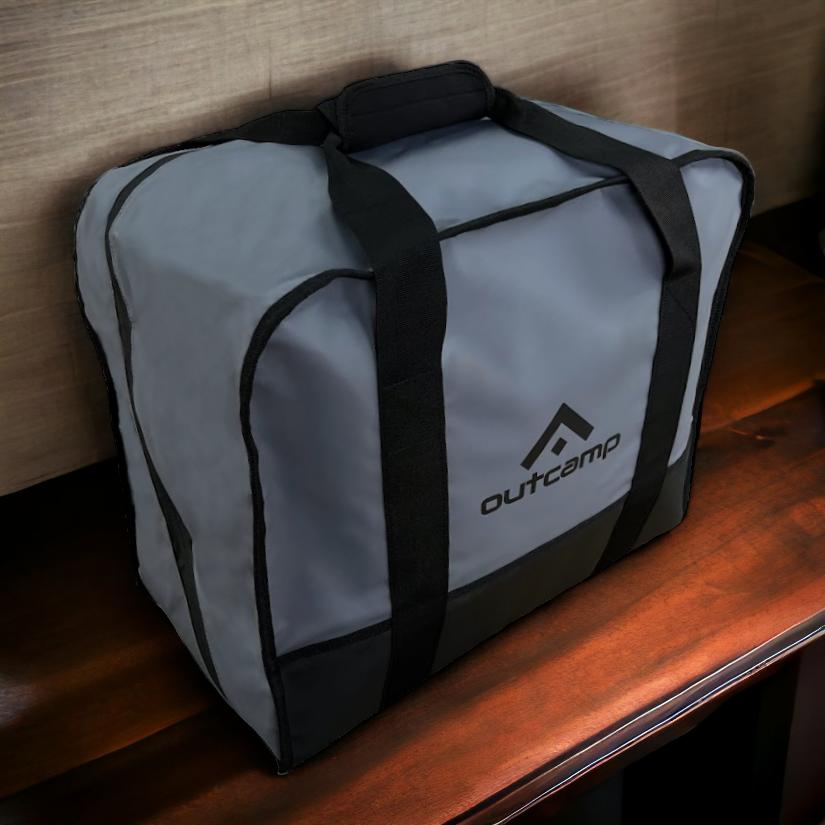

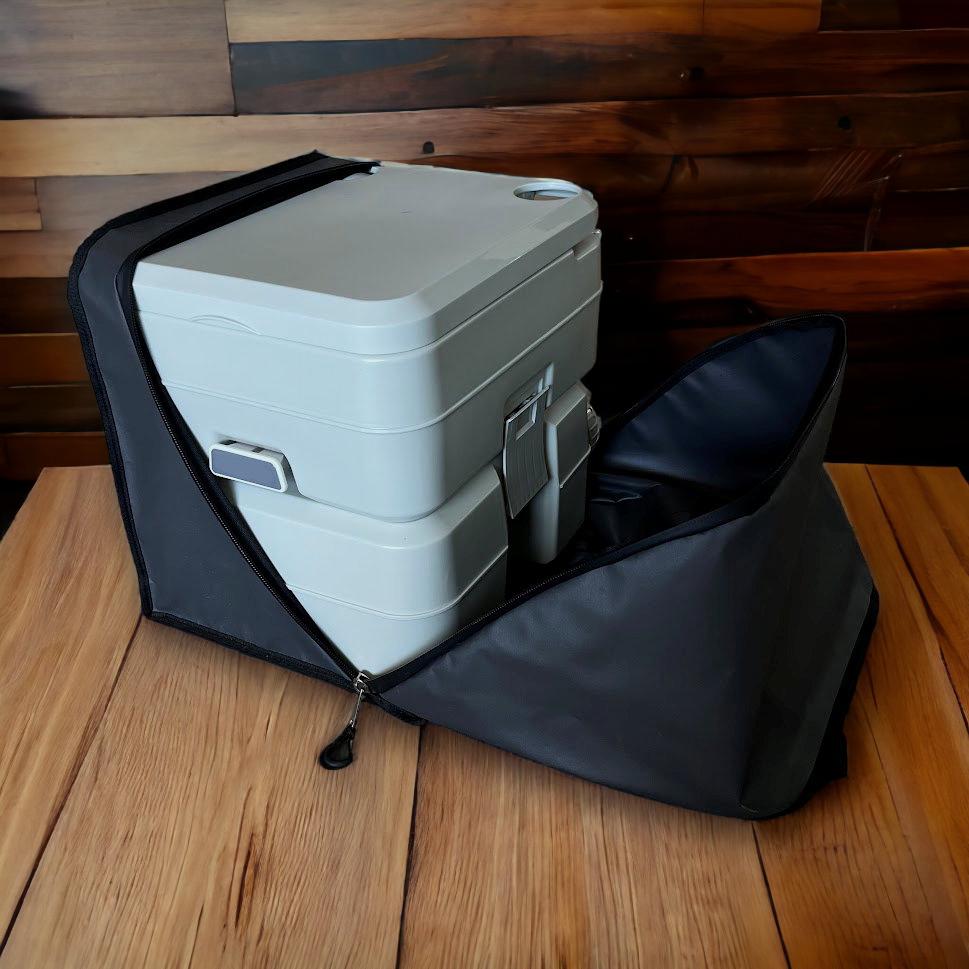
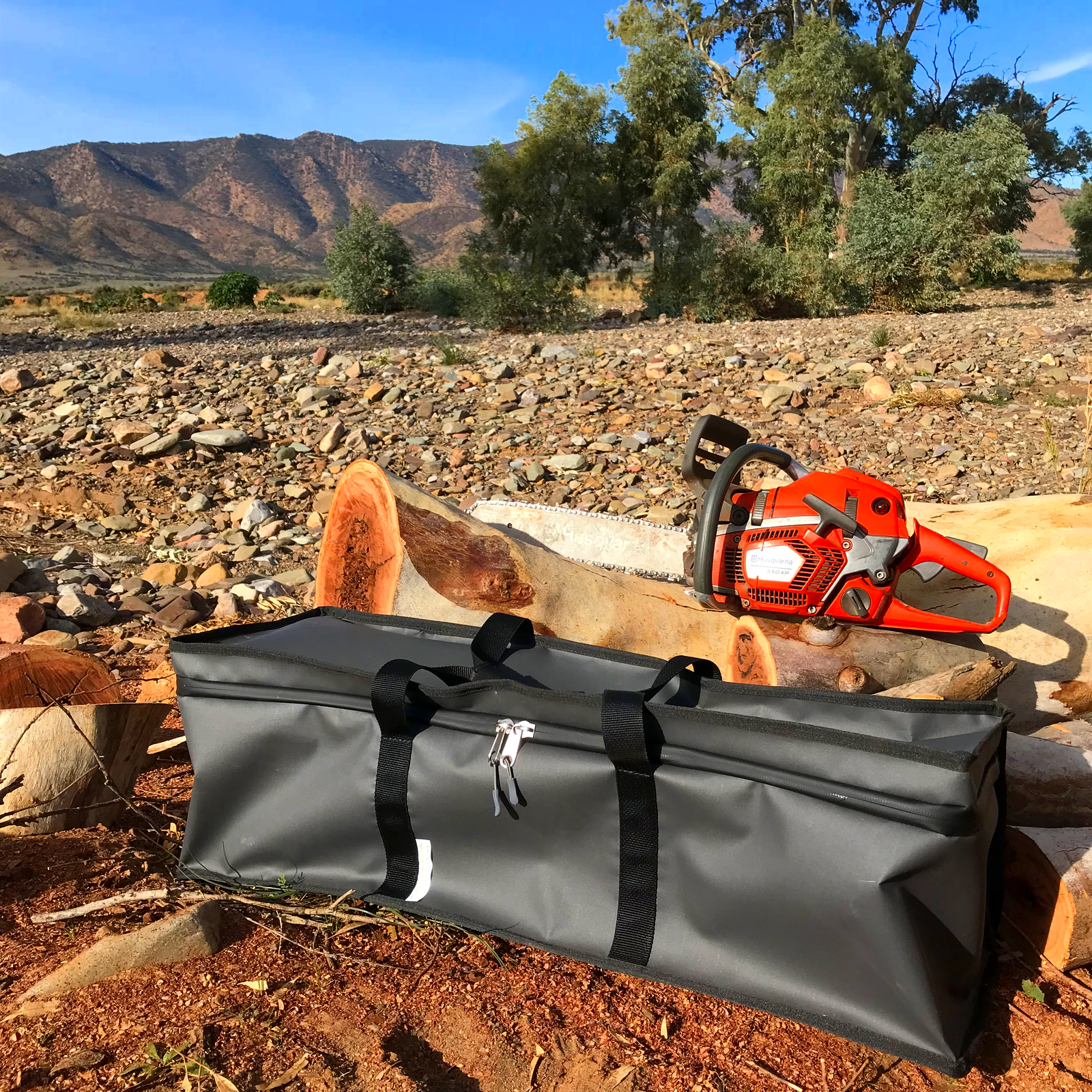
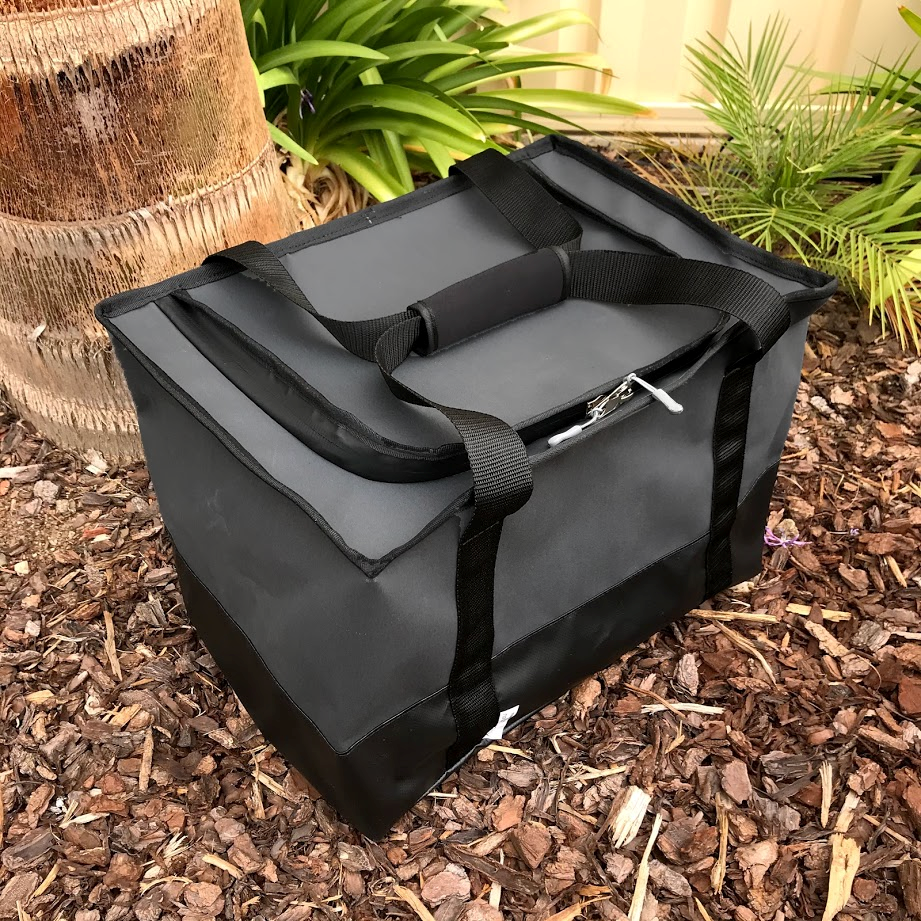







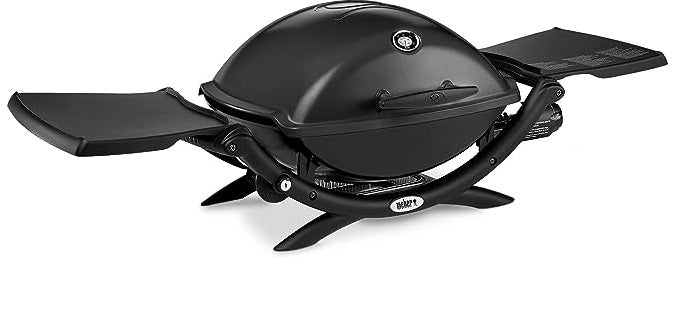
Tristan Dawes
December 12, 2023
Hey Brant! 🚙 Loved your blog on 4×4 dual battery systems! The breakdown was awesome, especially the solar panel charging tips – game-changer! 🌞 You should check out these 4wd and dual batteries https://www.everybattery.com.au/deep-cycle-batteries/4wd-dual-deep-cycle-batteries/ And big shoutout to TJM and REDARC for the expert recommendations, and I’m sold on the REDARC Battery Isolator. 🙌
MPPT controllers? Portable folding solar panels? Mind blown! 💥 And your nod to Deep Cycle Batteries? Got my attention – they’re the real MVPs. Thanks for making the upgrade seem less daunting! ⚡️🏞️